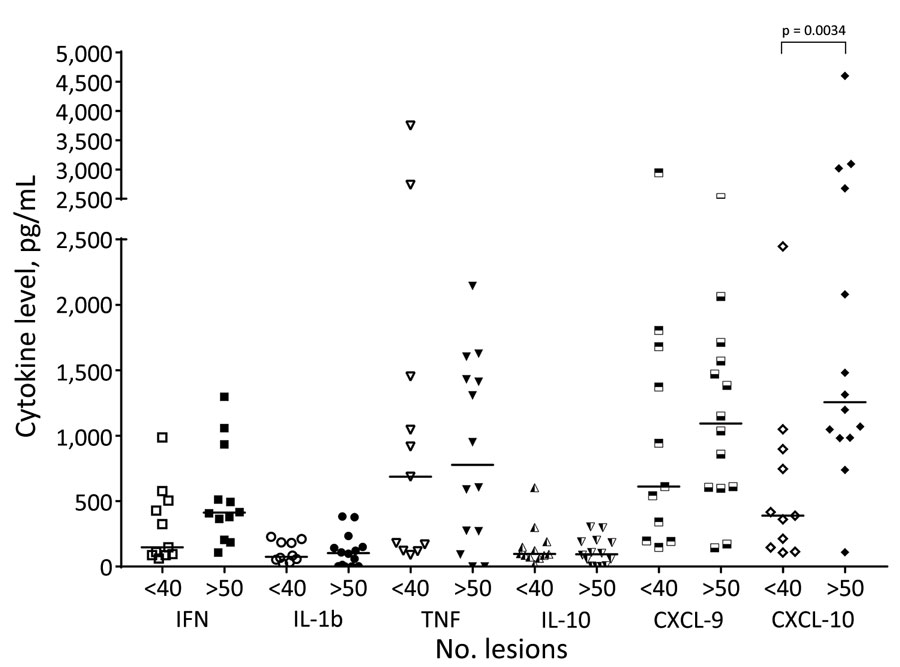Volume 30, Number 3—March 2024
CME ACTIVITY - Research
Disseminated Leishmaniasis, a Severe Form of Leishmania braziliensis Infection
Figure 2

Figure 2. Systemic production of chemokines and cytokines among disseminated leishmaniasis (DL) patients with >50 and <40 lesions, Corte de Pedra Health Post, Brazil, 2016–2019. Peripheral blood mononuclear cells from 11 patients with <40 lesions and 14 patients with >50 lesions were cultured in the presence of soluble Leishmania antigen (5 µg/mL) for 72 hours. Cytokine levels in culture supernatants were measured by ELISA. Horizontal lines represent median values. CXCL, chemokine ligand; IFN, interferon; IL, interleukin; TNF, tumor necrosis factor.
Page created: January 26, 2024
Page updated: February 23, 2024
Page reviewed: February 23, 2024
The conclusions, findings, and opinions expressed by authors contributing to this journal do not necessarily reflect the official position of the U.S. Department of Health and Human Services, the Public Health Service, the Centers for Disease Control and Prevention, or the authors' affiliated institutions. Use of trade names is for identification only and does not imply endorsement by any of the groups named above.